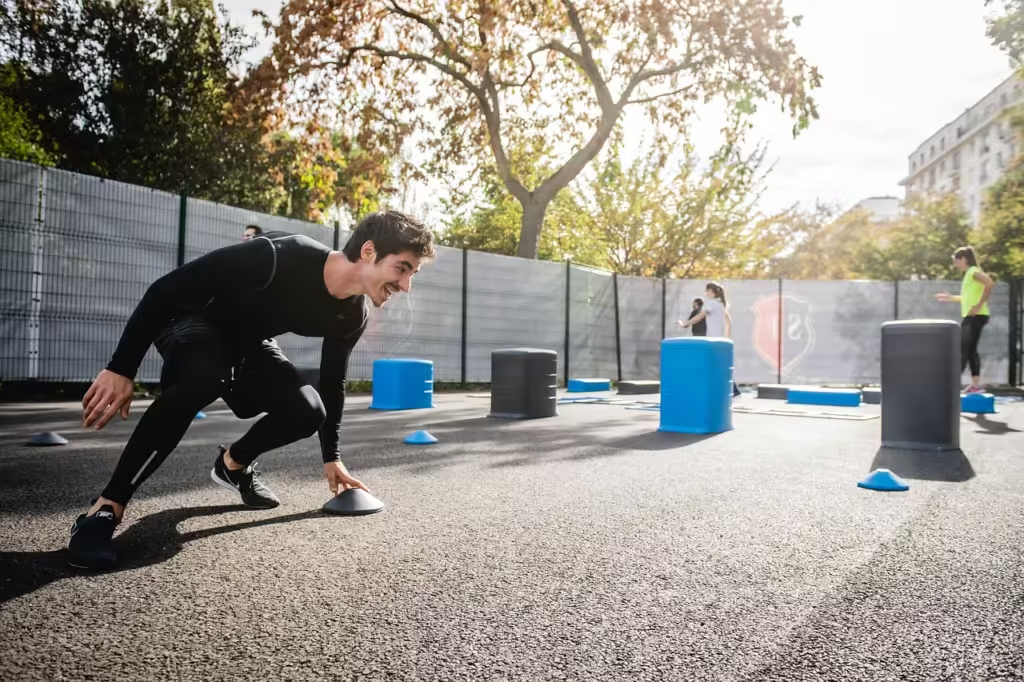Have you ever wondered what it takes to maintain muscle strength and joint health as you enter your 50s? This period of life presents unique challenges, but with the right approach, it’s possible to stay strong, active, and healthy.
Maintaining muscle strength and joint health in your 50s is crucial for preserving quality of life. It’s more than just about avoiding pain; it’s about living vibrantly, pursuing hobbies, and staying independent. This guide provides a comprehensive look at how to achieve this balance, with evidence-based strategies and practical tips.

This image is property of pixabay.com.
Table of Contents
The Need for Strength and Joint Health in Your 50s
Overview
As you age, physiological changes such as sarcopenia (loss of muscle mass) and osteoarthritis (joint degeneration) become increasingly relevant. However, modern medicine and fitness science offer numerous ways to counteract these changes and maintain both muscle strength and joint functionality.
Thesis Statement
This article will explore proven methods to maintain muscle strength and joint health as you age. From understanding fundamental concepts to reviewing practical exercises and nutrition, you’ll find actionable steps to preserve your physical well-being.
Historical Context and Current Trends
Historical Context
The concept of maintaining physical health in one’s later years has evolved significantly over the last century. Where once aging was synonymous with frailty, modern science now tells us that many age-related declines in muscle strength and joint health are preventable.
Current Trends
Current research underscores the importance of a holistic approach. This means integrating exercise, proper nutrition, and lifestyle choices to maintain muscle strength and joint health. Strength training, in particular, has gained prominence as a crucial element for aging well.
Key Concepts and Definitions
Sarcopenia
Sarcopenia refers to the age-related loss of muscle mass and strength. It typically begins around the age of 50 and accelerates after the age of 60, making it a primary focus for those looking to stay strong.
Osteoarthritis
Osteoarthritis is a degenerative joint disease that affects millions worldwide. Characterized by cartilage breakdown, it results in pain, stiffness, and reduced mobility, mainly in the hands, knees, hips, and spine.
Breaking Down the Approach
Exercise: The Foundation of Strength
Strength Training
Strength training, which includes weightlifting and resistance exercises, is fundamental for combating sarcopenia. It helps by stimulating muscle growth and improving bone density, which supports joint health.
Example Exercises:
- Squats: Targets legs and glutes, crucial for mobility.
- Deadlifts: Focuses on back and core, enhancing overall stability.
- Overhead Press: Strengthens shoulders and upper body.
Cardiovascular Exercise
Cardiovascular exercises like walking, swimming, and cycling improve joint health by maintaining fluid movement and reducing stiffness. They also support muscle endurance and overall fitness.
Nutrition: Fueling Your Body
Protein Intake
Adequate protein intake is essential for muscle repair and growth. Aim for 1.0-1.2 grams of protein per kilogram of body weight per day. Lean meats, dairy, legumes, and fish are excellent sources.
Anti-Inflammatory Foods
Incorporating anti-inflammatory foods can help manage joint pain. Omega-3 fatty acids found in fish, flaxseeds, and walnuts are particularly beneficial.
Lifestyle Choices
Sleep
Quality sleep is often underestimated but is essential for recovery and overall health. Aim for 7-9 hours per night to allow your muscles to repair and strengthen.
Stress Management
Chronic stress can negatively impact both muscle strength and joint health. Techniques such as yoga, meditation, and deep-breathing exercises can be beneficial.

This image is property of pixabay.com.
Multiple Perspectives
Eastern vs. Western Approaches
Eastern medicine often focuses on holistic methods like acupuncture and tai chi for joint health. In contrast, Western medicine emphasizes pharmacological treatments and physical therapy. Both approaches offer valuable insights and can be integrated for a balanced strategy.
| Aspect | Eastern Approach | Western Approach |
|---|---|---|
| Philosophy | Holistic, energy-based | Scientific, evidence-based |
| Techniques | Acupuncture, herbal remedies, tai chi | Medications, physical therapy, surgery |
| Focus | Prevention and balance | Treatment and rehabilitation |
| Efficacy | Proven for certain conditions | Rigorously tested through trials |
Impact Assessment
Combining elements from both Eastern and Western methodologies can provide a comprehensive strategy to maintain muscle strength and joint health. For example, integrating low-impact exercises like tai chi with Western medicine’s physical therapy can yield effective results.
Practical Application
Creating a Balanced Routine
A balanced routine incorporates strength training, cardiovascular exercise, and flexibility training. Each component serves a unique purpose: muscle strength, heart health, and joint mobility.
Sample Weekly Routine:
| Day | Activity | Duration |
|---|---|---|
| Monday | Strength Training (Upper Body) | 45 minutes |
| Tuesday | Walking | 30 minutes |
| Wednesday | Strength Training (Lower Body) | 45 minutes |
| Thursday | Yoga or Tai Chi | 30 minutes |
| Friday | Swimming or Cycling | 30 minutes |
| Saturday | Full Body Workout | 60 minutes |
| Sunday | Rest or Light Stretching | 20 minutes |
Nutrition Plan Example:
Breakfast:
- Greek yogurt with berries and honey
- Whole-grain toast with avocado
Lunch:
- Grilled chicken salad with mixed greens, nuts, and vinaigrette
Dinner:
- Baked salmon with quinoa and steamed vegetables
Snacks:
- Protein smoothies, nuts, or fruit

This image is property of pixabay.com.
Future Directions and Implications
Predictions
As we continue to understand more about aging, it’s likely that personalized and precision medicine will become more prominent. Genetic testing may help develop individualized exercise and nutrition plans to optimize muscle strength and joint health.
Implications
Maintaining muscle strength and joint health in your 50s has a profound impact on long-term well-being. Societal implications include reduced healthcare costs and increased quality of life, making this a priority for public health initiatives.
What do you think about the potential for integrating genetic insights into personalized fitness plans?
Conclusion
To summarize, maintaining muscle strength and joint health in your 50s involves a multi-faceted approach that includes regular exercise, proper nutrition, and mindful lifestyle choices. By understanding the physiological changes and implementing tailored strategies, you can continue to lead an active, fulfilling life.
Reflecting on the various methods discussed, what will be your first step towards ensuring better muscle strength and joint health as you age?


